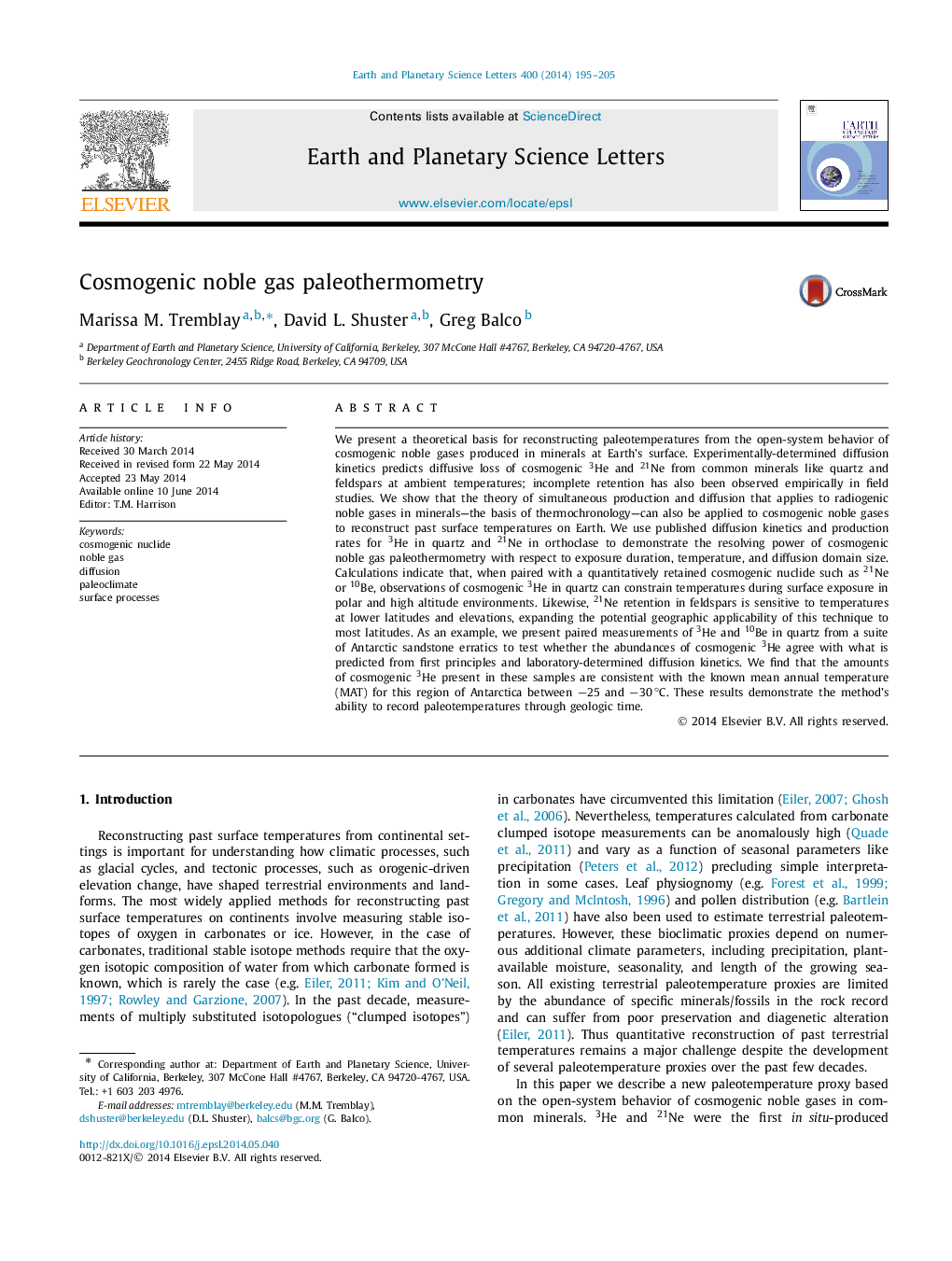| کد مقاله | کد نشریه | سال انتشار | مقاله انگلیسی | نسخه تمام متن |
|---|---|---|---|---|
| 6428775 | 1634756 | 2014 | 11 صفحه PDF | دانلود رایگان |

- We present a new technique for determining past surface temperatures.
- This technique utilizes open-system behavior of cosmogenic noble gases in minerals.
- We consider the cosmogenic 3He-quartz and 21Ne-orthoclase systems.
- This technique can constrain temperature changes over the past few million years.
- A 3He-quartz dataset from Antarctica confirms the feasibility of this new technique.
We present a theoretical basis for reconstructing paleotemperatures from the open-system behavior of cosmogenic noble gases produced in minerals at Earth's surface. Experimentally-determined diffusion kinetics predicts diffusive loss of cosmogenic 3He and 21Ne from common minerals like quartz and feldspars at ambient temperatures; incomplete retention has also been observed empirically in field studies. We show that the theory of simultaneous production and diffusion that applies to radiogenic noble gases in minerals-the basis of thermochronology-can also be applied to cosmogenic noble gases to reconstruct past surface temperatures on Earth. We use published diffusion kinetics and production rates for 3He in quartz and 21Ne in orthoclase to demonstrate the resolving power of cosmogenic noble gas paleothermometry with respect to exposure duration, temperature, and diffusion domain size. Calculations indicate that, when paired with a quantitatively retained cosmogenic nuclide such as 21Ne or 10Be, observations of cosmogenic 3He in quartz can constrain temperatures during surface exposure in polar and high altitude environments. Likewise, 21Ne retention in feldspars is sensitive to temperatures at lower latitudes and elevations, expanding the potential geographic applicability of this technique to most latitudes. As an example, we present paired measurements of 3He and 10Be in quartz from a suite of Antarctic sandstone erratics to test whether the abundances of cosmogenic 3He agree with what is predicted from first principles and laboratory-determined diffusion kinetics. We find that the amounts of cosmogenic 3He present in these samples are consistent with the known mean annual temperature (MAT) for this region of Antarctica between â25 and â30â°C. These results demonstrate the method's ability to record paleotemperatures through geologic time.
Journal: Earth and Planetary Science Letters - Volume 400, 15 August 2014, Pages 195-205